The Marshall Plan
Unraveling the Hidden Connection Between the World Bank, CIA, and the Council on Foreign Relations
The Marshall Plan, often portrayed as a noble effort to rebuild war-ravaged Europe after World War II, is more complex and controversial than it first appears. Behind the scenes, key figures like John J. McCloy wielded significant influence, intertwining the Plan with the interests of the World Bank, the CIA, and the Council on Foreign Relations (CFR). These connections reveal how American taxpayer money was channeled not just for reconstruction but for advancing a broader, more opaque agenda—one that has echoes in the way foreign aid is used today, particularly in the ongoing Ukraine conflict.
The Marshall Plan and the World Bank: Financial Control Under the Guise of Aid
The World Bank, established in 1944 as part of the Bretton Woods system, played a crucial role in the post-war reconstruction of Europe. The Marshall Plan, officially known as the European Recovery Program, saw billions of dollars in U.S. funds flow into European economies, ostensibly to rebuild infrastructure and stabilize governments.
However, the World Bank's involvement ensured that this aid came with significant strings attached. Countries receiving Marshall Plan aid were often required to align their economic policies with U.S. interests, paving the way for American corporations to dominate European markets.
The Marshall Plan, officially known as the European Recovery Program, was announced by U.S. Secretary of State George C. Marshall in a speech at Harvard University on June 5, 1947.
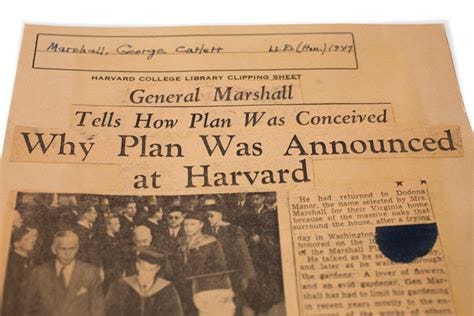
The Plan was supposedly designed to aid the reconstruction of Europe after World War II, providing substantial financial support to rebuild economies, infrastructure, and governments. While the Marshall Plan is often portrayed as a purely humanitarian effort, its execution and impact reveal deeper and more complex layers of political and economic strategy. President Harry S. Truman signed the Marshall Plan into law on April 3, 1948.
Financial Scope
The Marshall Plan allocated around $13 billion over four years to European countries, which is equivalent to approximately $153-173 (one site claiming this would be worth $700 billion) billion in today's dollars when adjusted for inflation. Given that the U.S. was emerging from the Great Depression, the scale of this financial commitment raises questions about how such a substantial amount was mobilized. The funds were not only used for rebuilding infrastructure but also served as a tool for economic and political influence.
Indirect Beneficiaries in the Banking Sector
While the Marshall Plan was primarily funded by U.S. taxpayer money and administered through government agencies such as the Economic Cooperation Administration (ECA), private banks, including major institutions like Citi (then known as First National City Bank of New York), indirectly benefited from the plan. The infusion of capital into war-torn Europe revitalized economies, stimulated international trade, and created a favorable environment for global financial markets. Banks like Citi, JPMorgan Chase, and others in the financial sector profited from the increased demand for banking services, such as loans, foreign exchange, and trade financing, as European countries rebuilt their industries and infrastructure.
The economic recovery also led to a resurgence in international investment, further enhancing the profitability of these banks. While not directly publicly involved in the execution of the Marshall Plan, these financial institutions reaped significant rewards from the overall boost in global economic activity that the plan helped to generate. The impact of The Marshall Plan and the power it wielded onto banking systems can still be felt today globally.
John J. McCloy: Architect of the Marshall Plan and Gatekeeper of Justice
John J. McCloy, who served as the President of the World Bank from 1947 to 1949, was at the heart of this effort. McCloy, a key architect of the Marshall Plan, used his position to ensure that the aid served not just “humanitarian purposes” but also the strategic interests of the United States.
His career, deeply embedded in the corridors of power, saw him move seamlessly between roles at the World Bank, the U.S. government, and major financial institutions like Chase Manhattan Bank, illustrating the tight-knit relationships that drove post-war policies.
John J. McCloy: The Strategic Manipulator Behind Global Power and Elite Networks
John J. McCloy, often referred to by his nickname "Jack," had humble beginnings as the son of Anna Snader McCloy, a Philadelphia hairdresser who catered to wealthy families, including the Schiffs, Warburgs, and Rockefellers, during their summers on Mount Desert Island, Maine.

The Rothschilds, another powerful family, had longstanding ties with the Schiffs, sharing a home in Frankfurt marked by a red shield on the Rothschild side and a ship on the Schiff side, symbols of their intertwined legacies. Growing up, Jack accompanied his mother on her rounds, forging early connections with these influential families. As a young man, he secured a job teaching the Rockefeller children, a relationship that evolved into a lifelong association with some of the most powerful banking dynasties in the world.

McCloy became a trusted advisor and lawyer to the Schiffs, Warburgs, and Rockefellers, who entrusted him with their most sensitive “assignments”. His career soared as he took on significant roles, including serving as Assistant Secretary of War during World War II, where he controversially chose not to bomb the Auschwitz railway tracks, and later as the U.S. High Commissioner for Germany, where he granted clemency to Nazi war criminals like Alfried Krupp. McCloy also played a pivotal role in merging the Warburgs' Manhattan Bank with the Rockefellers' Chase Bank in 1955, creating Chase Manhattan Bank. His deep connections with these elite families extended to his position on the Warren Commission, where it was rumored that his task was to ensure that no one suspected his patrons' involvement in the assassination of JFK.
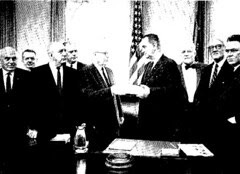
McCloy's Role in Germany: Pardoning Nazi War Criminals
After his tenure at the World Bank, McCloy became the U.S. High Commissioner for Germany, a position that granted him immense power over the country's post-war reconstruction. One of his most controversial actions in this role was the pardoning and early release of numerous Nazi war criminals. As the High Commissioner, McCloy had the authority to review the sentences of those convicted at the Nuremberg Trials and other tribunals. His decisions often prioritized the perceived needs of the Cold War over justice for the victims of Nazi atrocities.

Notably, McCloy commuted the sentences of several high-ranking Nazis, including industrialists like Alfred Krupp and Friedrich Flick, who had exploited forced labor during the war. These decisions were driven by the desire to quickly rebuild West Germany as a strong ally against the Soviet Union.
However, they have been heavily criticized for allowing individuals responsible for heinous war crimes to escape full accountability, raising questions about the moral compromises made in the name of geopolitical strategy.
John J. McCloy: Quite the Curriculum Vitae
Early Career and Legal Background
1916: Enrolled at Harvard Law School.
1917: Joined the U.S. Army as a second lieutenant; served in World War I.
1919: Completed LL.B. at Harvard; joined Cadwalader, Wickersham & Taft; later became a partner at Milbank, Tweed, Hadley & McCloy.
World War II and Intelligence Work
Early 1940s: Assisted in establishing the Office of Strategic Services (OSS) and the Pentagon; supported the creation of the United Nations and advocated for war crimes tribunals. His involvement laid the groundwork for significant intelligence and policy decisions with lasting impacts.
1941-1945: Served as Assistant Secretary of War. His tenure was marked by controversial decisions, including those affecting wartime industry and logistics.
1945: Contributed to the disbandment of the OSS and the establishment of the Central Intelligence Agency (CIA), setting the stage for covert operations and intelligence activities.
Marshall Plan
1947: Involved in the Marshall Plan, which aimed at rebuilding Europe post-WWII. While presented as a recovery effort, the plan also entrenched U.S. economic and political influence in Europe.
Post-War Roles and Controversies
1947-1949: President of the World Bank. During his tenure, McCloy focused on institutional development, but his leadership also reinforced U.S. economic dominance over other nations.
1949-1952: U.S. High Commissioner for Germany. McCloy played a key role in Germany's economic and political reconstruction. He controversially granted pardons to Nazi war criminals, raising questions about his commitment to justice.
1953: Considered for Chief Justice by President Eisenhower, but the appointment did not materialize.
1950s John J. McCloy’s Role in the Bilderberg Group
The Bilderberg Group was founded in 1954 as an exclusive forum for discussing global economic and political issues.
John J. McCloy began attending Bilderberg meetings in the 1950s.
He brought extensive experience from his roles as U.S. High Commissioner for Germany, President of the World Bank, and Chairman of Chase Manhattan Bank.
His participation included contributing to discussions on international economic policies, geopolitical strategies, and global governance.
Specifics of his contributions remain confidential due to the private nature of the meetings.
McCloy’s attendance at these early Bilderberg gatherings highlighted his influential role in shaping global policy during post-war reconstruction and Cold War tensions.
Warren Commission
1963-1964: Appointed to the Warren Commission to investigate President John F. Kennedy’s assassination. The Commission’s conclusions have been criticized for their lack of transparency and the questionable handling of evidence and testimony.
Influence in Foundations and Finance
1946-1949: Trustee of the Rockefeller Foundation. His role in the Foundation involved significant influence over global health initiatives but also raised concerns about the Foundation’s alignment with certain political and economic interests.
1953-1960: Chairman of Chase Manhattan Bank. McCloy’s tenure was marked by his influence in global finance, including questionable business practices and connections with controversial figures.
1958-1960: Chairman of the Ford Foundation. His leadership in the Foundation extended its influence but also aligned with various political and economic agendas.
Salk Institute and Vaccine Development
1960: Became Chairman of the Board of Trustees at the Salk Institute for Biological Studies. Under his leadership, the Institute pursued significant research, including the development of vaccines. However, his connections to controversial research practices have led to scrutiny.
Collaboration with Tuskegee Institute
1960s: The Salk Institute, under McCloy’s leadership, engaged in research collaborations with the Tuskegee Institute. The Tuskegee Institute is historically linked to the unethical Tuskegee Syphilis Study, which supposedly involved deliberately withholding treatment from African American men to study the progression of untreated syphilis (but who really knows what this study was or what they were really doing). This association raises serious ethical concerns about the oversight and practices of joint research projects during this period.
Controversial Experiments and Ethical Issues
MK Ultra and MK Naomi (1950s-1960s): While McCloy’s direct involvement in these programs is not documented, his extensive connections within governmental and scientific circles suggest potential indirect associations. MK Ultra involved CIA experiments with mind control and psychological manipulation, while MK Naomi focused on developing biological and chemical agents.
Collaborations with German Companies
Post-WWII: McCloy maintained connections with German companies, including those with controversial histories. His business dealings with these companies, including negotiations and investments, have been criticized for prioritizing economic gain over ethical considerations and historical accountability.
Later Years and Legacy
1970: Became Honorary Chairman of the Council on Foreign Relations (CFR). Continued to wield significant influence in international policies, with his actions and decisions often reflecting controversial aspects of global politics.
1970s-1980s: Continued influence across finance and international relations, with a legacy marked by both significant achievements and contentious ethical issues.
1989: Passed away, leaving behind a complex legacy characterized by notable contributions to policy and finance, tempered by serious controversies and ethical questions.
Helping to Create the CIA
McCloy's influence extended into the realm of intelligence. As Secretary of War during World War II, he played a significant role in the creation of the Office of Strategic Services (OSS), the precursor to the CIA. After the war, McCloy continued to shape the U.S. intelligence apparatus, advising on the establishment of the National Security Council and the CIA. His role in these developments was pivotal in laying the groundwork for the covert operations that became a hallmark of U.S. foreign policy during the Cold War.
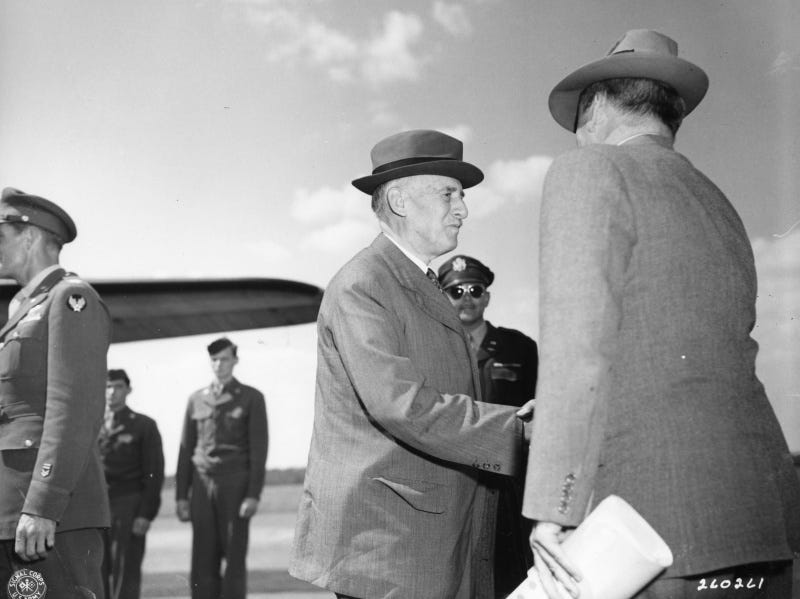
A few Covert CIA Operations That may not Have Happened Without McCloy or the Marshall Plan
Operation Ajax: Overthrowing Iranian Democracy Project Ajax was a covert operation conducted by the CIA in 1953 aimed at overthrowing the democratically elected Prime Minister of Iran, Mohammad Mossadegh. Mossadegh had nationalized the Iranian oil industry, threatening Western interests in the region. While supposedly not directly funded by the Marshall Plan, Project Ajax was part of a broader strategy facilitated by U.S. foreign policy and economic aid. The CIA used its influence, bolstered by the financial and political leverage gained from post-war aid programs, to orchestrate a coup. This intervention was designed to reinstall the Shah of Iran, who would align with U.S. interests and ensure Western control over Iranian oil.
Project Mockingbird: Controlling the Media Project Mockingbird was a CIA program initiated in the late 1940s to influence and control the American and European media landscape. The program aimed to ensure that media narratives aligned with U.S. intelligence and foreign policy objectives during the early Cold War period. The CIA recruited journalists and media executives, providing them with funding and operational support to promote pro-American viewpoints and suppress information that contradicted U.S. interests. The influence extended to major news outlets, shaping public perception and policy debates in favor of U.S. strategies.
MK-Ultra: Mind Control and Psychological Warfare MK-Ultra was a CIA program initiated in the 1950s aimed at developing methods of mind control and psychological manipulation. The program explored various techniques, including drug experiments, hypnosis, and sensory deprivation, to develop capabilities for interrogation and psychological warfare. MK-Ultra’s development was indirectly supported by the financial and technological resources that the U.S. accumulated through post-war aid programs, including the Marshall Plan. The Plan’s success in establishing U.S. influence provided a foundation for the expansion of intelligence and covert operations.
The MK-Ultra program encompassed 149 subprojects, which included MK-Naomi. These subprojects explored a wide range of methods and technologies related to mind control, psychological manipulation, and chemical warfare. The extensive scope of MK-Ultra’s subprojects highlights the breadth of experimentation conducted under the guise of scientific and military research. As a continuation of MK-Ultra, MK-Naomi focused on chemical and biological warfare. This program involved testing various substances to understand their effects and potential uses in warfare and intelligence operations.
Operation Chaos: Countering Radical Movements Operation Chaos was a CIA operation aimed at monitoring and disrupting anti-war and radical political movements in the 1960s and 1970s. The program sought to track individuals and groups within the U.S. and abroad that were critical of U.S. foreign policy, particularly those opposed to the Vietnam War. The CIA utilized surveillance, infiltration, and other covert methods to undermine these movements and prevent them from gaining political traction. Project Chaos extended the CIA's reach beyond traditional intelligence gathering, using techniques developed in the post-war period to influence domestic and international political landscapes.
Operation Gladio: The Marshall Plan's Covert Shadow Operation Gladio, a secret NATO operation initiated during the Cold War, was designed to counter Soviet influence in Europe by establishing clandestine "stay-behind" armies across various European countries. Funded and orchestrated by the CIA, Gladio seems to have operated in the shadows of the Marshall Plan, which officially aimed to rebuild war-torn Europe through economic aid between 1948 and 1952. While the Marshall Plan publicly promoted European recovery, it also is purported to have served as a financial conduit for covert operations like Gladio.
These operations are purported to have used Marshall Plan funds to support anti-communist activities, including political manipulation, paramilitary training, and even acts of terrorism, all aimed at preventing the spread of communism in Europe.
John J. McCloy, deeply involved in the Marshall Plan and with close ties to the intelligence community, likely played a significant role in facilitating the overlap between economic aid and covert operations, ensuring that U.S. strategic interests were maintained under the guise of European recovery.
CIA’s Role in Italian Political Affairs The CIA’s involvement in Italy during the early Cold War years is a notable example of covert intervention. In 1948, the CIA orchestrated a covert operation to prevent the Italian Communist Party from winning the national elections. This effort involved funding anti-communist political parties, influencing media narratives, and engaging in various forms of political sabotage to sway public opinion. The success of this operation helped secure Italy as a pro-Western ally during the Cold War, highlighting how the Marshall Plan’s economic and political leverage was used to shape political outcomes in Europe.
The Council on Foreign Relations: The Power Behind the Throne
The Council on Foreign Relations (CFR) was instrumental in shaping the policies that underpinned the Marshall Plan. As an elite think tank, the CFR provided a forum where American policymakers, corporate leaders, and academics could discuss and design strategies for maintaining and expanding U.S. global influence. Many of the key figures involved in the Marshall Plan, including George C. Marshall and John J. McCloy, were CFR members, further entrenching the organization's influence over U.S. foreign policy.
The CFR's involvement in the Marshall Plan is emblematic of its broader role in American geopolitics: crafting policies that promote U.S. economic and strategic interests while maintaining an aura of altruism. This model of policy-making—where elite consensus drives government action—has continued to shape American foreign aid strategies, from post-war Europe to modern-day conflicts.
A Modern Parallel: The Ukraine Aid Funnel
The patterns established during the Marshall Plan era are strikingly evident in the current U.S. aid to Ukraine. Just as the Marshall Plan was used to secure American dominance in Europe, the billions of dollars being funneled into Ukraine today serve to maintain U.S. influence in Eastern Europe and counter Russian power. However, much like in the late 1940s, this aid is not purely benevolent. A significant portion of the funds allocated to Ukraine are funneled through defense contractors, financial institutions, and NGOs, many of which have close ties to the U.S. government and global financial elites.
This modern aid package, like the Marshall Plan before it, raises questions about whose interests are really being served.
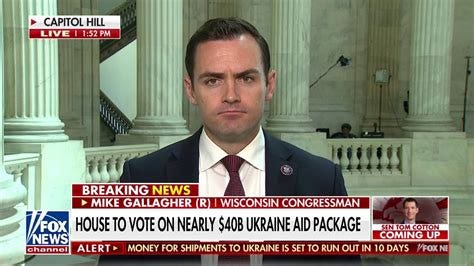
While it is presented as support for a beleaguered ally, the underlying motivations and beneficiaries are far more complex, involving a mix of strategic interests and financial gain for a select few.

The Legacy of McCloy and the Marshall Plan
John J. McCloy’s career offers a window into the true nature of the Marshall Plan and its legacy. Far from being a straightforward aid program, the Plan was part of a broader strategy to reshape the global order in ways that favored U.S. interests, often at the expense of justice and transparency. McCloy’s involvement in pardoning Nazi war criminals, shaping the U.S. intelligence community, and guiding the World Bank underscores the deep connections between government, finance, and covert operations that have shaped American foreign policy for decades.
Today, as American taxpayers fund massive aid packages with little understanding of where the money is going or who benefits, the lessons of the Marshall Plan are more relevant than ever. The same networks of power and influence that drove post-war policies continue to shape global events, highlighting the need for greater transparency and accountability in how foreign aid is used and how global strategies are crafted.




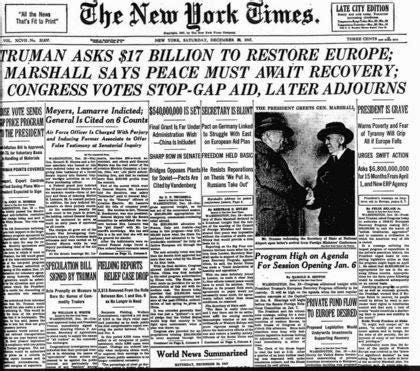
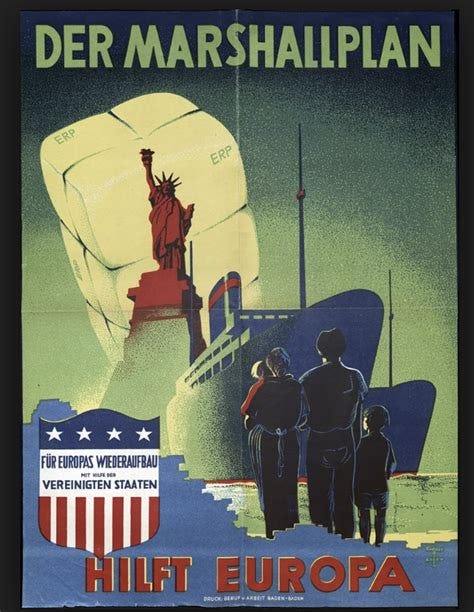


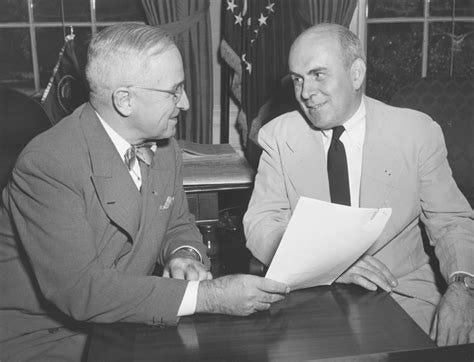

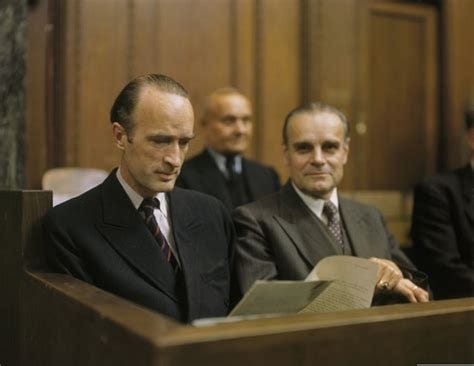
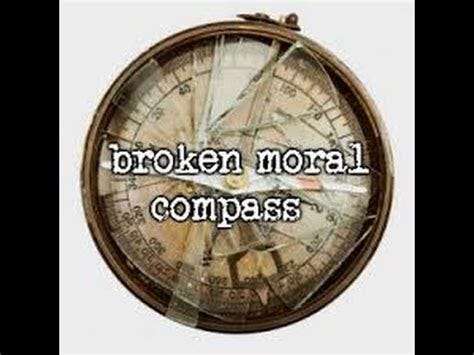
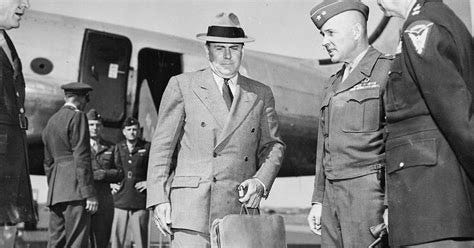

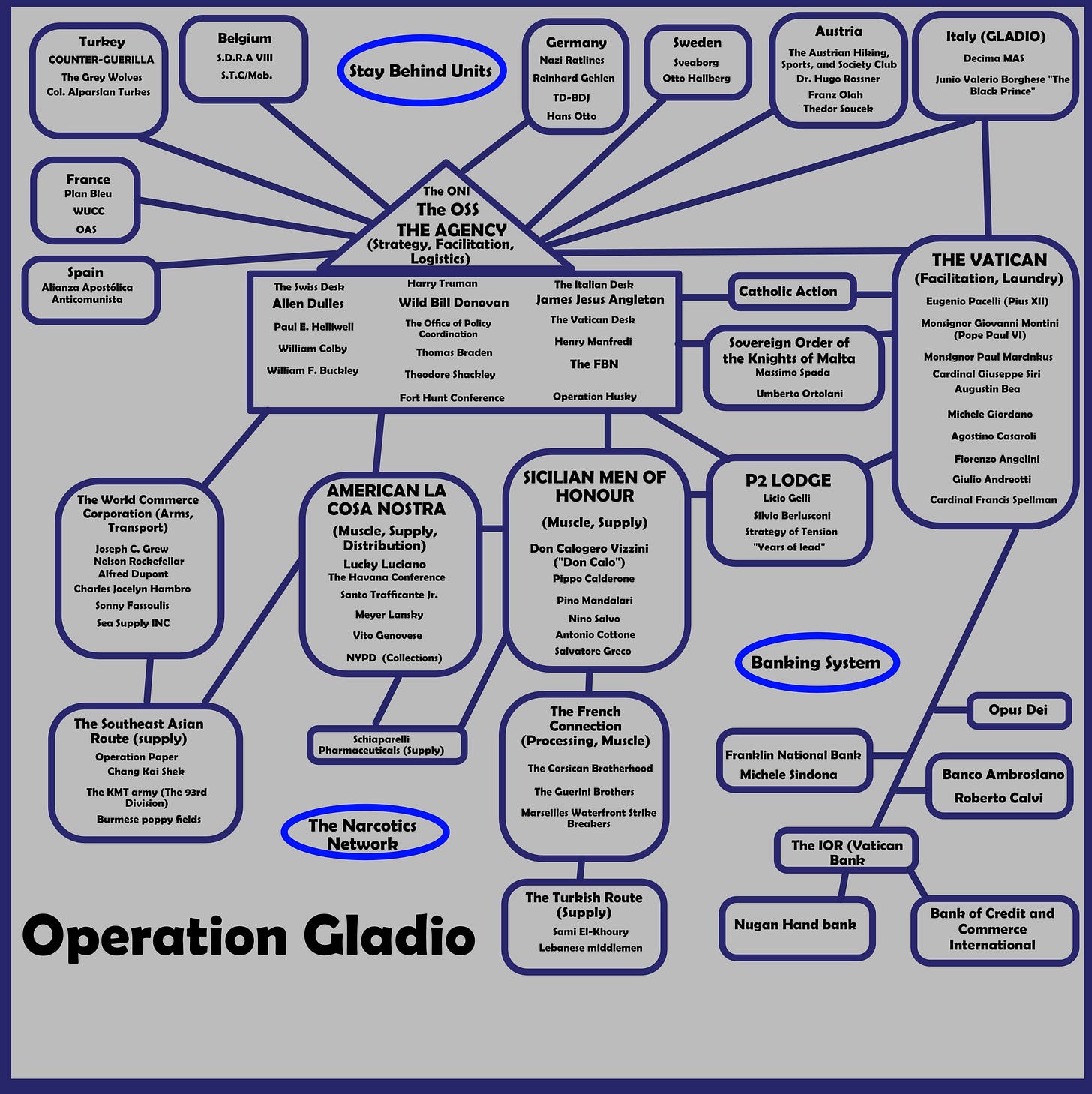




Cleanse the words of any nationality and the clear picture is revealed. Long plan in the working appears to be coming together in the final digital convergence steps. I just researched my bank announcement of new core platform.
Finserv dna. Microsoft 4 and oracle open source. Of course with all the platitudes of new improvements for a better customer banking experience. Fuken eh..
This proves that the same groups of interest that secured the largest heist in history, the Federal Reserve Act of 1913, are now ready to introduce the CBDC that will look the Fed as a junior high school project:
https://rayhorvaththesource.substack.com/p/the-final-stage-to-a-one-world-government
Not much is hidden at this point. The globalist fronts are attacking the world from all directions, based on the single premise that they own/control just about everything that matters, including governments.
It would be a good project to see if the same owners still own the companies that served Nazi Germany. If that is the case, it would demonstrate continuity in the globalist plan to take over the world.
The CIA and the COFR are only fronts that can be replaced anytime...
While I am not buying into easy solutions (that collect a lot of readers, but everything on my site is free), Masonic infiltration from 1859 (when Darwin published the Origin of Species, to tell people they are only animals, and the project was already supported by the same globalist forces that are about to take over the world in a technocratic dictatorship) seems to go into just about everything that matters.
https://rayhorvaththesource.substack.com/p/the-magic-color-of-blue